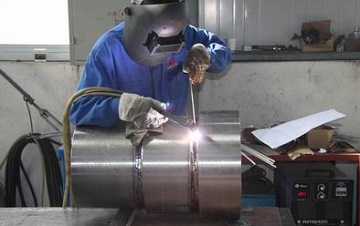Engineering Tips for The Welding of Titanium
The commercially pure titanium such as titanium grade 1 and grade 2 is reactive in atmosphere. A protective oxide film formed on its surface prevents further corrosion. It makes titanium materials quite stable in atmosphere. However, during the welding of titanium, as temperature is elevated, the diffusion of oxygen, nitrogen, and hydrogen into titanium is dramatically increased in the atmospheric condition: Hydrogen starts to diffuse into titanium at 250°C; While oxygen and nitrogen starts to diffuse into titanium at 400°C and 600°C respectively. The O, N & H absorbed increase the hardness and result in embrittlement of the titanium material. Hence effective measures should be taken during the welding process: (1)The welding shall be conducted under the shield of inert gas(often argon). This is known as TIG welding. (2) The surface of base metal shall be carefully cleaned prior to welding to make sure that there is no oil or other hydrocarbon residues.

The welding of titanium Gr.2 pipes, ASTM B862.
Since titanium may react with the ferric ion to form ferrotitanium compounds which may destroy the protective titanium dioxide film due to its galvanic effect in the welding zone, any ferrous residue shall be completely prohibited. Otherwise, hydrogen embrittlement may occur. Besides, due to the high melting point, large specific heat, and poor thermal conductivity characteristics of titanium, grain growth may be observed in the welds and heat affected zone. This may result in decreased plasticity and toughness. Therefore, low current and properly controlled interpass temperature shall be adopted during the welding process.
